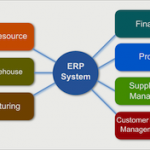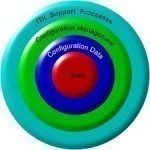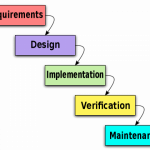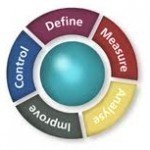Every company, organization, and agency needs a way to efficiently retrieve, retain, organize, and present data. Because of this fact, many business and social entities use enterprise data management software and concepts to keep track of the information that keeps their business or organization alive and making a profit. There are many enterprise data management programs on the market and several important aspects that make up an enterprise data management system. In this article, we will go over what makes enterprise data management systems and several popular enterprise data management Read More
ERP (Enterprise Resource Planning)

ERP (Enterprise Resource Planning) is principally an integration of business management practices and modern technology. Information Technology (IT) integrates with a corporate house’s core business processes to streamline and accomplish specific business objectives. Consequently, ERP is an amalgamation of three most important components: Business Management Practices, Information Technology, and Specific Business Objectives. In simpler words, an ERP is a massive software architecture that supports the streaming and distribution of geographically scattered enterprise information across all the functional units of a business house. It provides the business management executives with a Read More
SAS 70 Compliance
The Statement on Auditing Standards (SAS) No. 70 is one of the recognized auditing standards that was developed to audit organizations. It is so successfully recognized because it demonstrates that the organization went through a very in-depth audit of the different controls of the organization-control objective and control activities to be specific. Because of the way the economy has become so global today, it is increasingly important to customers to know where their data is being hosted or processed so that they know it is safe. When an organization has Read More
e-Learning

e-Learning is learning that takes place in an electronically simulated environment. e-Learning, web-based training, internet-based training and computer-based training are the next-generation instruction methods being developed today. With e-Learning, users can immerse themselves in a three-dimensional environment to further enhance their learning experience. Moreover, e-Learning can be done anywhere and anytime as long as the user has the proper hardware. Today, e-Learning is fast becoming a reality through companies like Trainersoft and others. e-Learning can be done using a internet connection, a network, an intranet, or a storage disk. It Read More
MTTR (Mean Time to Recovery)

MTTR is an abbreviation for Mean Time To Recovery or Mean Time To Repair which represents the average time taken to put a defective component or system back in working order. It is a measure of the maintainability of a system and predicts the average amount of time required to get the system to work again in case of a system failure. MTTR can range from a few milliseconds, as in the case of an uninterrupted power supply (UPS) to many hours or even days in the case of application Read More
Six Sigma

Six Sigma is a business improvement methodology. Its main objective is to implement a vigorous process to systematically eliminate defects and inefficiency. Motorola originally developed it in the early 1980s. Its proficiency has caused it to become extremely popular in many corporate and small business environments around the world. Six Sigma’s main purpose is to deliver high performance, value, and reliability to the customer. It is regarded and used around the world as one of the major themes for TQM (Total Quality Management). Bill Smith at Motorola developed Six Sigma Read More
ITIL Configuration Management

Configuration management within the ITIL system is asset management to begin with, but then so much more. The ultimate role of Configuration Management is to deal with all configuration items within one’s organization. They identify what these configuration items (CIs) are, control them, maintain them in the format that they are currently and then verify them. Because quality is everything, it is important for configuration management to provide quality data within this database to ensure the effectiveness of the entire operation. Main Activities of Configuration Management There are a series Read More
Waterfall Model

The Waterfall model is one of the best known applications of the Systems Development Life Cycle model (or SDLC), commonly used in the information systems, software, and systems engineering fields. The model is a sequential design process and gets its name from the visual depiction of progress, following the methodology looking like a waterfall as it steadily progresses downward through its phases. The Waterfall model originated from highly structured physical environments that see a high cost associated with after-the-fact changes being made to the system or product being created. Previously Read More
What is Keiretsu?

The keiretsu business system first hit the press in the United States during a series of trade disputes between the United States and Japan in the late 1980s to early 1990s. The system is a series of affiliated companies that work together to ensure the mutual success of each company. The keiretsu system also relies on a very close partnership between the affiliated companies and the government, banks, suppliers, and distributors. The keiretsu system’s primary criticism is that the affiliation essentially results in a mega-company that excludes outside interference and Read More
DMAIC

DMAIC is a basic Six Sigma methodology component- a way to improve work processes by eliminating defects. The Six Sigma methodology is widely used in many top corporations in the United States and around the world. It is normally defined as a set of practices that improves efficiency and eliminate defects. Six Sigma has been around for more than 20 years and TQM (Total Quality Management) and Zero Defect principles have heavily influenced it. In its methodology, it asserts that in order to achieve high quality manufacturing and business processes, Read More


Share on: